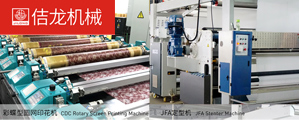What is the textile industry data when China’s GDP exceeded 100 trillion yuan?
Jan 29, 2021 | by Zhao xh

According to preliminary calculations, the GDP in 2020 was 101,598.6 billion yuan, an increase of 2.3% over the previous year at comparable prices. In quarterly terms, the first quarter was down 6.8% year-on-year, the second quarter was up 3.2%, the third quarter was up 4.9%, and the fourth quarter was up 6.5%. In terms of industries, the added value of the primary industry was 7,775.4 billion yuan, an increase of 3.0% over the previous year; the added value of the secondary industry was 38,425.5 billion yuan, an increase of 2.6%; and the added value of the tertiary industry was 55,397.7 billion yuan, an increase of 2.1%.
In 2020, the added value of the industrial enterprises above designated size nationwide increased by 2.8% over the previous year. From January to November, the national industrial enterprises above designated size achieved a total profit of 5,744.5 billion yuan, a year-on-year increase of 2.4%, and the growth rate was 1.7 percentage points higher than that from January to October. Among them, in November, the total profit of industrial enterprises above designated size increased by 15.5% year-on-year, maintaining double-digit growth for 6 months.
China’s GDP exceeded 100 trillion for the first time. What’s the data of textile industry?
According to data from the National Bureau of Statistics, from January to November 2020, the industrial added value of textile enterprises above designated size decreased by 3.1% year-on-year, operating income decreased by 9.7% year-on-year, total profit decreased by 8.6% year-on-year, and fixed asset investment completed decreased by about 18% year-on-year. Among the main categories of products, only nonwovens products increased significantly, with a year-on-year increase of 14.4% from January to November; the output of chemical fiber realized a slight positive growth after entering the fourth quarter, and the output of other products decreased compared with the same period in 2019.
From January to November, the growth rate of industrial added value of enterprises above designated size rose by 13.4, 3.6, and 1.5 percentage points from the first quarter, first half of 2020 and the first three quarters of 2020 respectively; the sales profit rate of enterprises above designated size from January to November was 4.3%. This is a significant improvement from the 2.2% at the end of February, and an increase of 0.1 percentage point from the same period in 2019.
Driven by pandemic prevention materials, the industrial textile industry continued to perform well. The industrial added value from January to November increased by 56.4% year-on-year, and the total profit increased by 218.6% year-on-year. Both the production and profit scale of the home textile industry have exceeded the same period in 2019, and the industrial added value and total profit from January to November increased by 0.3% and 21.7% year-on-year respectively.
In 2020, the total retail sales of consumer goods was 39,198.1 billion yuan, a decrease of 3.9% from 2019. According to the National Bureau of Statistics, the year-on-year decline in retail sales of clothing, shoes, hats, knitting and textiles of units above designated size gradually narrowed from more than 30% at the beginning of 2020 to 7.9% in January-November. After August, retail sales for a single month have maintained positive growth. From January to November, the retail scale of online apparel products nationwide increased by 5.9% year-on-year.
In 2020, the total value of imports and exports of goods was 32,155.7 billion yuan, an increase of 1.9% over the previous year. Among them, exports were 17,932.6 billion yuan, an increase of 4.0%; imports were 14,223.1 billion yuan, a decrease of 0.7%.
In 2020, textile exports increased by nearly 30% year-on-year. According to customs statistics, China’s total textile and apparel exports reached USD 291.22 billion in 2020, a year-on-year increase of 9.6%. The export scale is close to the industry’s best record in 2014. Among them, anti-pandemic materials such as masks and protective clothing have a prominent role in pulling exports, accounting for about 25% of the industry’s total exports. This has caused changes in the export structure of the textile industry. For the first time, textile exports exceeded apparel and accounted for 52.8% of total exports.
Among them, textile exports in 2020 were USD 153.84 billion, a year-on-year increase of 29.2% (in RMB terms, an increase of 30.4%); clothing exports were USD 137.38 billion, a year-on-year decrease of 6.4% (in RMB terms, a year-on-year decrease of 6.0%).
In 2020, the COVID-19 broke out globally, and developed economies such as Europe and the United States have surged in the procurement of pandemic prevention materials. China took the lead in fully resuming work and production, as the largest supplier of pandemic prevention materials, China provides and exports anti-pandemic materials to more than 200 countries and regions around the world. According to customs statistics, from March to the end of 2020, customs across the country inspected and released major pandemic prevention and control materials worth 438.5 billion yuan, of which 224.2 billion masks were exported, worth 340 billion yuan.
The textile industry has increased its share of major overseas import markets
In 2020, the share of China’s textile and clothing in major overseas import markets such as Europe, America and Japan increased, especially the share of textile exports in overseas markets increased by about 10-30 percentage points.
According to data from the Textile and Apparel Office of the U.S. Department of Commerce, from January to November 2020, the U.S. imported USD 44.09 billion in textiles and apparel from China, a year-on-year increase of 9.2%. China’s share of the U.S. textile and apparel import market increased by 5.1 percentage points to 39.6% from 2019. Among them, the proportion of textiles has increased from 43.7% in 2019 to 56.1% at present.
According to Eurostat data, in the first three quarters of 2020, China exported 20.22 billion euros of textiles and apparel to the EU, an increase of 45.7% year-on-year. China’s share of the EU’s textile and apparel import market was 44.8%, an increase of 12.2 percentage points from the previous year. Among them, the proportion of textiles rose to 65.8%, and the proportion of apparel rose 4.4 percentage points to 35.5%.
According to Japanese customs statistics, from January to November 2020, China accounted for 58.6% of Japan’s global imports of textile and apparel products, an increase of 3.2 percentage points from the previous year. Among them, the proportion of textiles increased from 53.5% in 2019 to 68.6%.








